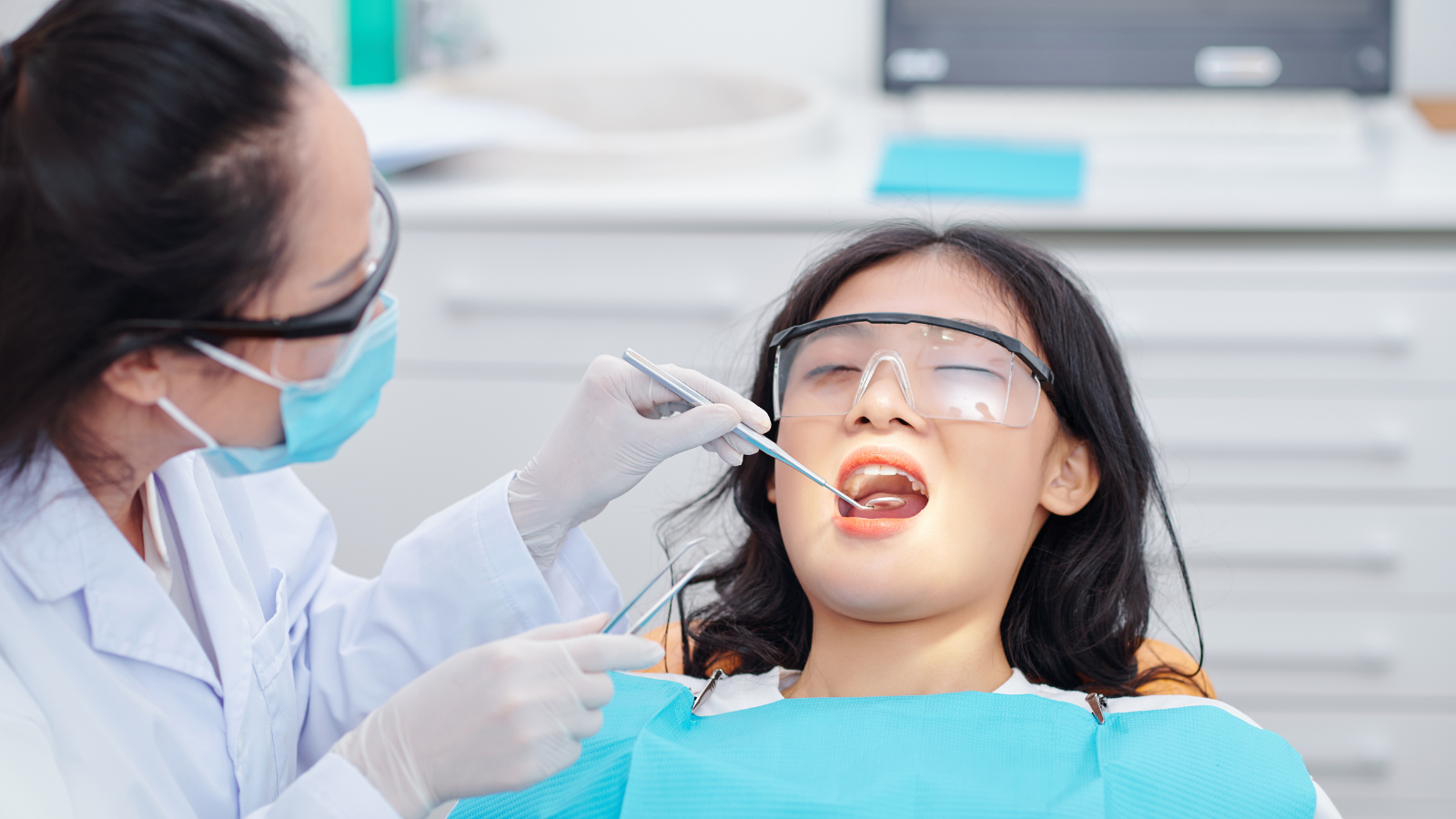Does Invisalign Make Your Teeth Thinner? The Truth Backed by Science

Strong 8k brings an ultra-HD IPTV experience to your living room and your pocket.
If you’re considering or already wearing Invisalign, you might wonder: "Is this going to thin out my teeth?" It’s a valid concern. Many patients associate orthodontic treatment with enamel wear, thinning teeth, or long-term sensitivity. With the increasing popularity of Invisalign, questions about its safety have also grown.
Fortunately, the truth is reassuring. When used correctly, Invisalign does not make your teeth thinner. But let’s dig deeper into what causes these concerns, how Invisalign really works, and what scientific research says about tooth health during treatment.
How Invisalign Works Without Damaging Enamel
Traditional braces often require etching or bonding, which can stress or slightly weaken the enamel. Invisalign, on the other hand, uses custom-made, removable aligners that apply gentle, controlled pressure to shift teeth over time. There is no drilling, etching, or bracket bonding involved.
According to Boyd, R. L. (2008) in the Journal of Clinical Orthodontics, Invisalign aligns teeth using mechanical force through trays and avoids any bonding agents that could harm enamel. This means the aligners themselves do not cause enamel removal or wear.
Unlike braces, no fixed metal brackets grinding against your teeth. Invisalign trays are smooth and fit snugly, reducing friction.
What Is IPR and Is It Safe for Your Teeth?
You may have heard about Interproximal Reduction (IPR) during Invisalign treatment. IPR involves removing very tiny amounts of enamel (usually between 0.2 mm and 0.5 mm) between select teeth to create space and avoid crowding.
But is that safe?
Research by Rossini et al. (2015) in Progress in Orthodontics confirms that controlled IPR is clinically safe. When done by a qualified dentist, it does not increase the risk of tooth sensitivity or decay.
Moreover, the enamel reduction in IPR is minimal, almost like filing your nails. As long as it's within safe limits, it doesn't impact the tooth's structural integrity.
When IPR Can Become Risky (But Rarely Does)
Like most dental procedures, overdoing IPR can cause harm. If more than 0.5 mm of enamel is stripped from any one surface, there is the potential risk to enamel strength and tooth durability.
Zachrisson et al. (2012) in the American Journal of Orthodontics found that standard IPR removes only 0.1–0.3 mm, which is considered insignificant in terms of weakening teeth.
Dentists trained in Invisalign are taught to follow strict guidelines and measurements. Ethical practitioners avoid over-reduction and use calibrated tools to ensure safety. According to Sheridan et al. (2017), IPR is effective and safe when done with air-rotor stripping under professional standards.
The Hidden Risk: Acid Erosion and Poor Oral Hygiene
If Invisalign doesn't thin your teeth directly, what about indirect causes?
A more realistic concern is that wearing aligners for 22+ hours a day can trap acids and sugars between the tray and teeth. This creates a micro-environment conducive to plaque buildup and enamel erosion, especially if oral hygiene is poor.
Abbate et al. (2010) in Angle Orthodontist discovered that Invisalign aligners can lower salivary pH, making the mouth more acidic. An acidic environment promotes demineralization, where enamel begins to weaken.
But this is preventable.
Using fluoride toothpaste or rinse, brushing after meals, and keeping aligners clean can reverse the damage risk. O'Reilly & Featherstone (2017) emphasize that fluoride helps re-mineralize enamel and provides a strong defense against acid erosion during orthodontic treatment.
Invisalign & Bruxism: An Unexpected Benefit?
Bruxism (teeth grinding) is another concern many patients have. Left unchecked, bruxism can definitely lead to enamel wear and thinner teeth.
Interestingly, Invisalign trays may actually help.
Almeida et al. (2016) in the Journal of Oral Rehabilitation found that Invisalign aligners can act as a protective barrier, reducing the grinding damage during sleep. The trays absorb some of the pressure, which can protect the biting surfaces of your teeth from excessive wear.
While Invisalign isn't a treatment for bruxism, it may offer some protection while you sleep — a surprising benefit!
Do Teeth Get Thinner Over Time? Long-Term Studies Say No
Worried about the long-term impact of aligners on tooth structure? Here’s some good news:
A 10-year follow-up study by Kravitz et al. (2020) published in the American Journal of Orthodontics and Dentofacial Orthopedics found no significant loss in tooth thickness or enamel wear in patients who underwent Invisalign treatment and maintained good oral hygiene.
This reinforces the conclusion that Invisalign, when done correctly and paired with proper care, does not weaken or thin teeth over time.
How to Protect Your Teeth During Invisalign Treatment
While Invisalign itself is safe, maintaining tooth health during treatment requires daily discipline. Here are some best practices:
- Brush and floss after every meal before putting the aligners back in.
- Use fluoride toothpaste or mouthwash daily.
- Clean your aligners with lukewarm water and a non-abrasive cleanser.
- Avoid sugary or acidic drinks while wearing aligners.
- Drink plenty of water to support healthy saliva flow.
- Visit your dentist regularly for checkups and professional cleanings.
By following these steps, you prevent acid erosion, plaque buildup, and ensure your enamel stays strong.
Final Verdict: Does Invisalign Thin Teeth?
Let’s settle it once and for all:
- Myth: Invisalign causes enamel to thin.
- Fact: Invisalign aligners do not directly affect enamel thickness.
- Myth: IPR damages your teeth.
- Fact: Controlled IPR is safe, painless, and has no significant impact on tooth strength.
- Myth: You’ll end up with sensitive, worn-down teeth.
- Fact: With good hygiene and dentist oversight, your teeth remain healthy throughout and after treatment.
When patients report "thinner" teeth after Invisalign, it often results from poor hygiene or unrelated conditions like bruxism, not the treatment itself.
FAQs
Q: Does IPR hurt?
A: Not at all. It’s a painless procedure, often done without anesthesia.
Q: Can Invisalign cause sensitivity?
A: It may cause mild temporary sensitivity from tooth movement, not enamel thinning.
Q: How do I know if I’m at risk of enamel erosion?
A: If you drink a lot of acidic drinks, don’t brush after meals, or fail to clean your aligners properly, you may be at risk. Talk to your dentist for personalized advice.
Conclusion
Invisalign is one of the most advanced and enamel-friendly orthodontic options available today. Backed by science and years of research, it provides beautiful results without compromising the health or thickness of your teeth.
If you're still unsure or want to get a personalized assessment, speak with your local Invisalign-certified dentist. You're just one consultation away from a healthier, straighter smile — with your enamel intact!
Note: IndiBlogHub features both user-submitted and editorial content. We do not verify third-party contributions. Read our Disclaimer and Privacy Policyfor details.




